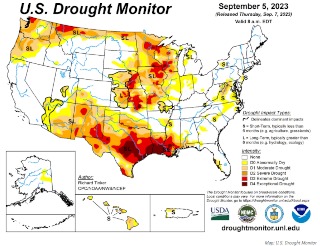The losses are a big factor in higher egg prices, said Jada Thompson, a poultry economist at the University of Arkansas who researches how diseases impact markets.
“One of the hard parts is there's this regional concentration of production,” Thompson said. “And so when a disease is going through and hitting farms in that area, it's gonna affect multiple farms, and that's gonna affect the supply of eggs – and that supply then will affect our prices.”
There are also other factors that impact prices, such as the typical uptick in demand for eggs during the holiday season and costs for inputs like feed and labor, Thompson said.
What do eggs cost in the Midwest?
The average price for a dozen large, Grade A eggs was $4.16 cents in the Midwest last month, according to the most recent consumer price index.

Highly pathogenic avian influenza has infected more than 130 million birds in the U.S. since it first emerged in 2022, according to the U.S. Centers for Disease Control.
Bird flu appeared in dairy cattle for the first time last year, and has infected more than 900 cows since last spring. More than 60 humans have also contracted the virus, mostly from working directly with sick animals on poultry or dairy farms. Most of the symptoms have been mild, and the health risk for humans is currently low, according to the CDC.
The virus is spreading to flocks as migratory birds fly south for the winter, said Yuko Sato, a poultry extension veterinarian at the Iowa State University Veterinary Diagnostic Lab. But the new strain in cows makes the situation different from previous years.
“Instead of just migratory birds being a potential source of the infection, now we also have to worry about potential interactions with infected dairy herds that could potentially transmit the virus to domestic poultry,” she said.
The virus has an extremely high fatality rate in birds, Sato said. Many birds die within a day or two — so when bird flu is confirmed on a farm, it affects the entire flock.
“Essentially, all of the birds that's on that site will be depopulated, meaning they'll all be put down, in order to control the virus and to make sure it's contained in one area to not spread to other premises,” Sato said.
Outbreaks are particularly hitting the middle of the U.S. hard, because there are a lot of large egg producers, Thompson said. Iowa, Ohio and Indiana produce the highest volume of eggs in the country, according to the USDA.
Click here to see more...